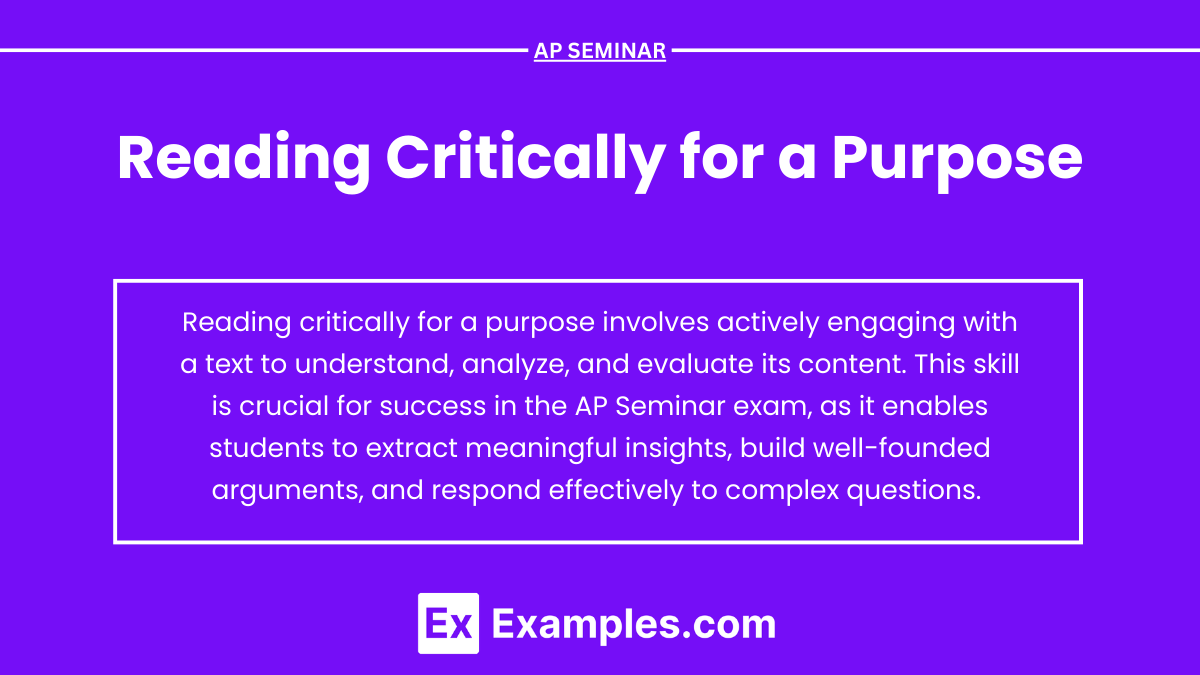Reading critically for a purpose involves actively engaging with a text to understand, analyze, and evaluate its content. This skill is crucial for success in the AP Seminar exam, as it enables students to extract meaningful insights, build well-founded arguments, and respond effectively to complex questions. By identifying the author’s purpose, questioning the text, and synthesizing information from multiple sources, students can deepen their comprehension and develop a nuanced perspective. Critical reading transforms passive consumption of information into an active dialogue with the text, empowering students to think independently and articulate their ideas clearly and persuasively.
Learning Objectives
In studying “Reading Critically for a Purpose” for the AP Seminar exam, you should learn to identify the author’s main arguments and purpose, evaluate the credibility and relevance of sources, and analyze evidence for quality and bias. Additionally, you should develop the ability to synthesize information from multiple texts to construct well-rounded arguments, challenge assumptions, and address counterarguments effectively. These skills will enhance your critical thinking, comprehension, and argumentative abilities, essential for success in the AP Seminar exam.
Understanding the Purpose of Reading
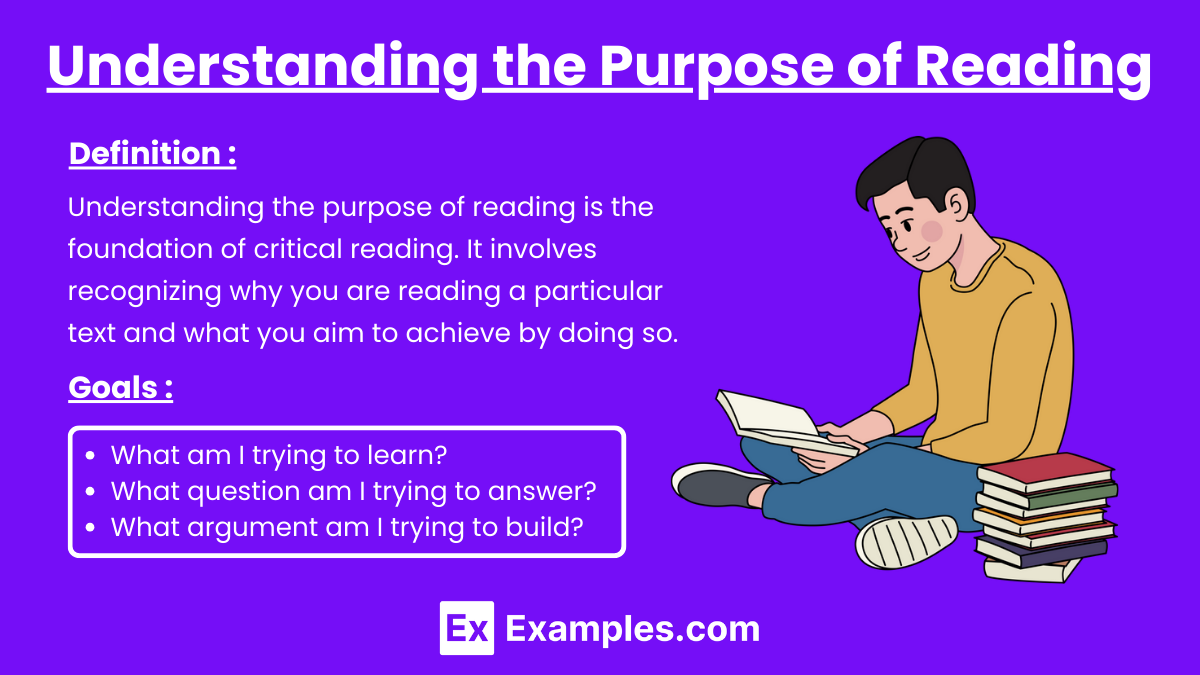
Understanding the purpose of reading is the foundation of critical reading. It involves recognizing why you are reading a particular text and what you aim to achieve by doing so. This clarity guides your focus and enhances your ability to extract relevant information and insights. Here’s a detailed look at how to understand the purpose of reading:
Identifying Your Goals
Identifying your goals is the first step in reading critically for a purpose. Clear goals provide direction and focus, ensuring that your reading is targeted and efficient. Here’s how to identify and articulate your goals:
- What am I trying to learn? Determine the specific information or knowledge you seek from the text.
- What question am I trying to answer? Pinpoint the research question or problem that your reading will help address.
- What argument am I trying to build? Understand how the text fits into your broader argument or thesis.
Types of Reading Purposes
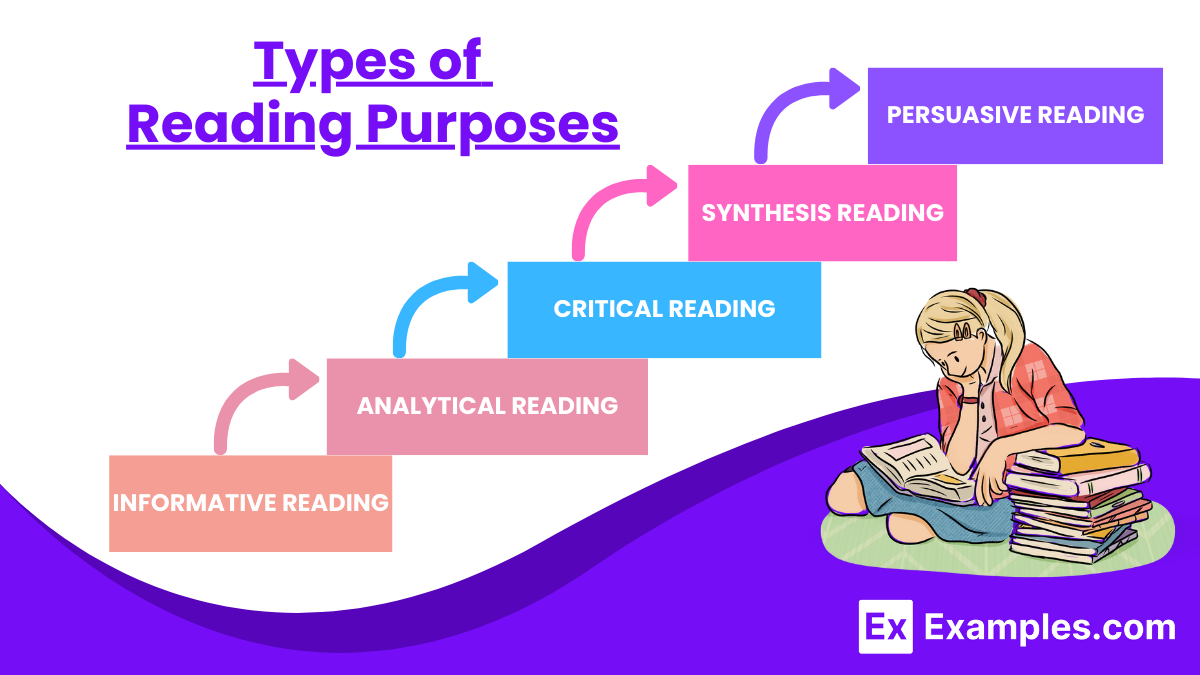
Understanding the different types of reading purposes is essential for effective critical reading. Each purpose dictates a unique approach and set of strategies to maximize comprehension and engagement. Here’s a detailed look at the various types of reading purposes
- Informative Reading: Seeking to gain information or understanding about a topic.
- Analytical Reading: Breaking down complex ideas and examining their components.
- Critical Reading: Evaluating the strengths and weaknesses of an argument.
- Synthesis Reading: Integrating ideas from multiple sources to form a new perspective.
- Persuasive Reading: Identifying persuasive techniques and evaluating their effectiveness.
Steps to Read Critically
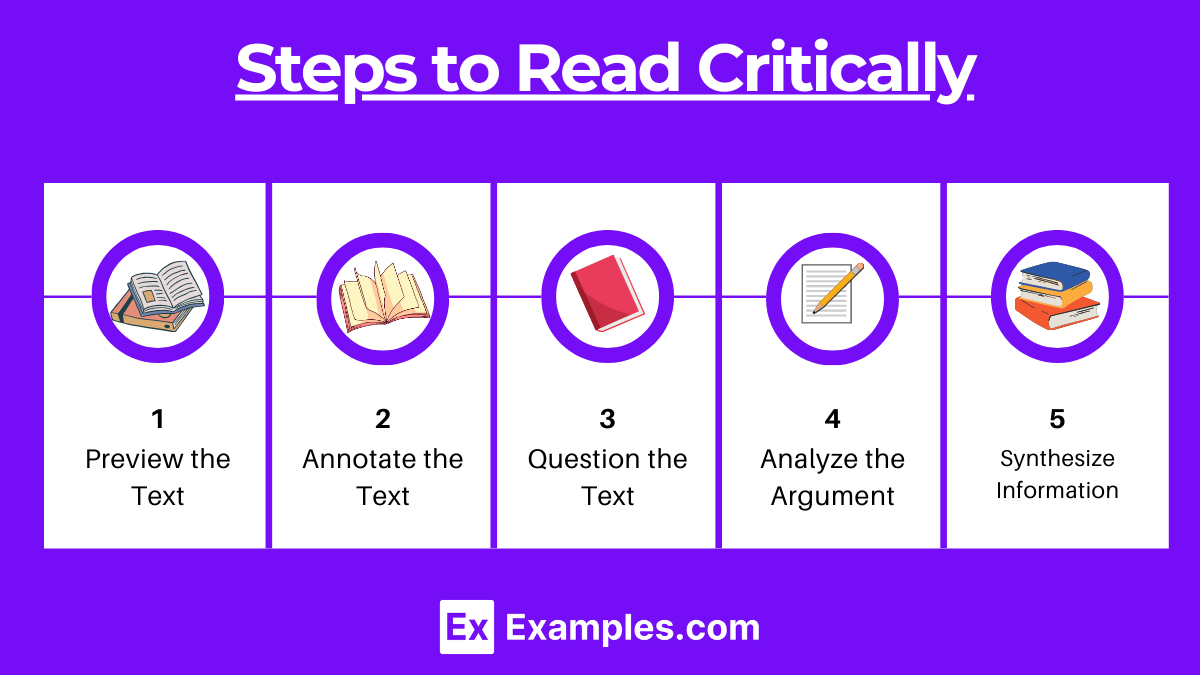
1. Preview the Text
- Title and Subheadings: These give clues about the main topics and structure.
- Introduction and Conclusion: These often summarize the key points.
- Author’s Background: Understanding the author’s perspective can provide context.
2. Annotate the Text
- Highlight Key Points: Identify main ideas, arguments, and evidence.
- Make Notes: Write questions, summaries, and reactions in the margins.
- Identify Patterns: Look for recurring themes, terms, or ideas.
3. Question the Text
- Author’s Purpose: What is the author trying to achieve?
- Target Audience: Who is the intended audience?
- Bias and Perspective: What biases might the author have? How do they influence the argument?
- Strength of Evidence: Is the evidence convincing? Why or why not?
4. Analyze the Argument
- Thesis Statement: Identify the main argument or claim.
- Supporting Evidence: Evaluate the quality and relevance of the evidence provided.
- Counterarguments: Consider alternative viewpoints and how the author addresses them.
- Logical Flow: Assess the coherence and structure of the argument.
5. Synthesize Information
- Integrate Sources: Combine insights from multiple texts to form a comprehensive understanding.
- Compare and Contrast: Identify similarities and differences between texts.
- Develop Your Argument: Use your critical reading to build and support your argument.
Techniques for Effective Critical Reading
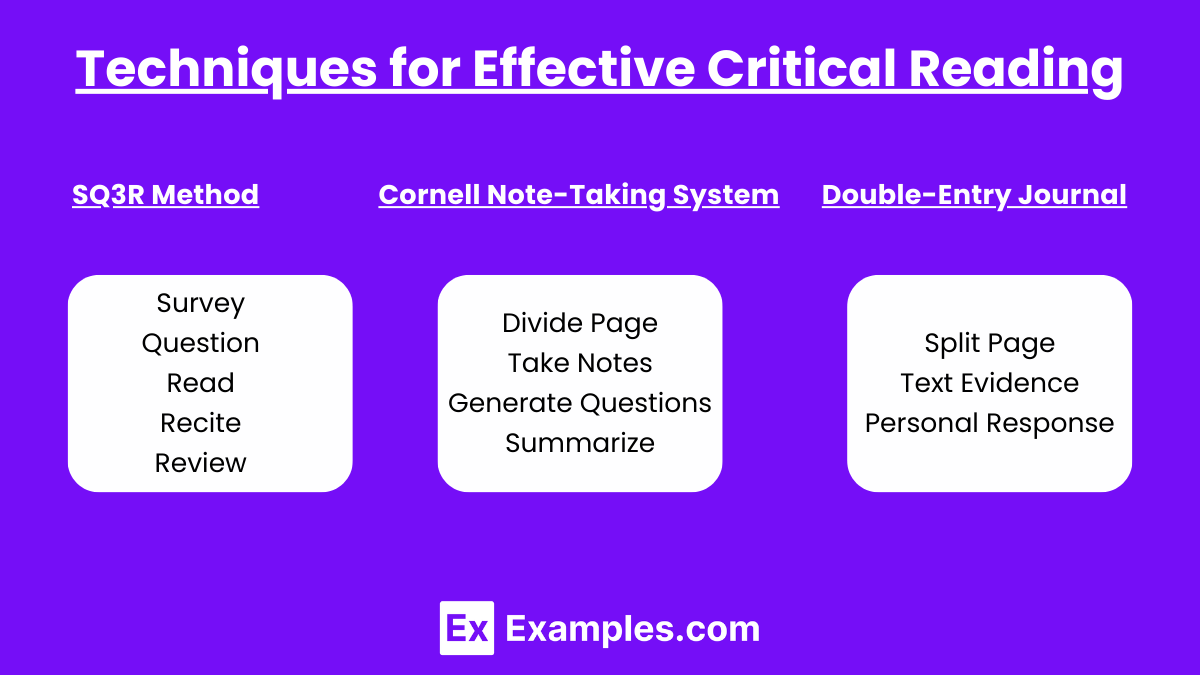
SQ3R Method
- Survey: Skim the text to get an overview.
- Question: Formulate questions based on headings and key points.
- Read: Read thoroughly to answer your questions.
- Recite: Summarize key points from memory.
- Review: Go over your notes and summaries to reinforce understanding.
Cornell Note-Taking System
- Divide Page: Create two columns, one for notes and one for cues.
- Take Notes: Write detailed notes in the right column.
- Generate Questions: Write questions or keywords in the left column.
- Summarize: At the bottom, write a summary of the key points.
Double-Entry Journal
- Split Page: Divide the page into two columns.
- Text Evidence: Write quotes or key points from the text on the left.
- Personal Response: Write your analysis, questions, or reactions on the right.
Importance of Critical Reading
Critical reading is a vital skill that enhances your ability to understand and engage with complex texts. It goes beyond simply reading for information; it involves analyzing, questioning, and evaluating the material to gain deeper insights and form well-founded opinions.
- Enhances Comprehension
- Deeper Understanding: Critical reading helps you go beyond surface-level understanding to grasp the deeper meanings and implications of a text.
- Contextual Awareness: It allows you to place the text within a broader context, considering historical, cultural, and social factors.
- Improves Analysis
- Identifies Key Arguments: Helps you identify the main arguments and supporting evidence in a text.
- Evaluates Evidence: Enables you to assess the quality and relevance of the evidence provided.
- Strengthens Argumentation
- Constructs Strong Arguments: Facilitates the development of well-supported and coherent arguments.
- Addresses Counterarguments: Prepares you to anticipate and address counterarguments effectively.
- Promotes Critical Thinking
- Challenges Assumptions: Encourages you to question and challenge assumptions and biases in the text.
- Develops Analytical Skills: Enhances your ability to analyze and synthesize information from multiple sources.

